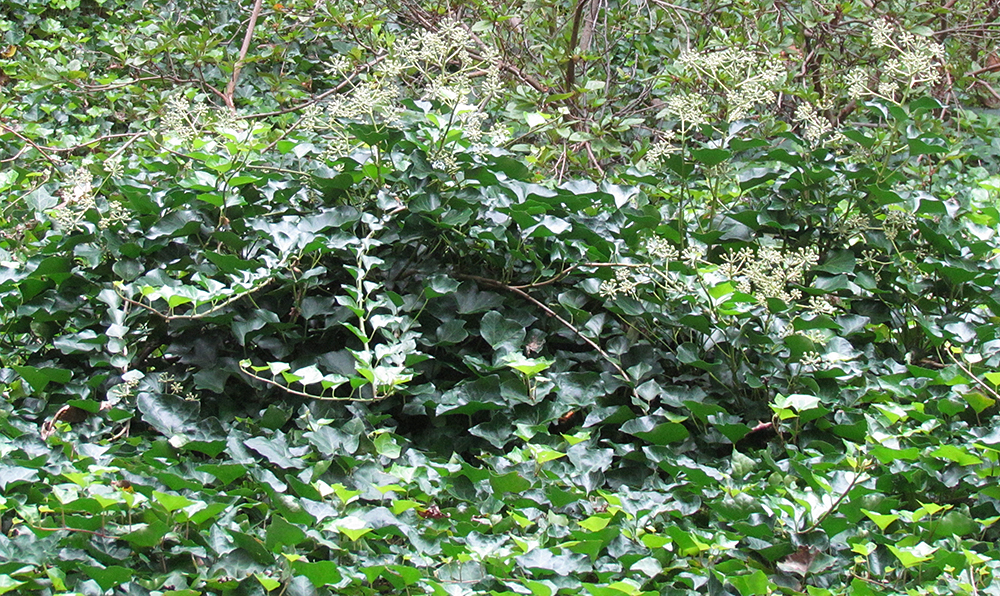English Ivy
Hedera helix
non-native
Other Names:
Common Ivy, European Ivy
Irish Ivy
Hedera hibernica
non-native
Other Name:
Atlantic Ivy
Both English and Irish Ivy are extremely unwelcome invasive vines. The two look similar, and both spread aggressively and crowd out native plant species. English Ivy smells musty if crushed, while crushed Irish Ivy smells sweet. There are other differences between the two that are of greater interest to botanists than to naturalists concerned about species diversity. English Ivy is native to most of Europe and to western Asia. It was first introduced to North America by early settlers for ornamental purposes. In Europe, it is put on buildings to cool them during the summer and to provide insulation in the winter. English Ivy outcompetes other plant species, and it tends to reduce the diversity of wildlife species. The leaves contain a high concentration of toxins, which can poison dogs if consumed. The weight of the ivy also can damage trees and cause them to fall. Monticello Park has sponsored "ivy pulls" to try to remove some of it from the park, and the City of Alexandria has applied herbicides to try to control it.
Identification Tools
![]() Go Botany (English)
Go Botany (English)
![]() iNaturalist (Irish)
iNaturalist (Irish)
![]() Invasive Plant Atlas of the United States (English)
Invasive Plant Atlas of the United States (English)
![]() Instructions for Removing English Ivy and Discussion of Safety
Instructions for Removing English Ivy and Discussion of Safety
![]() Missouri Botanical Garden (English)
Missouri Botanical Garden (English)
![]() Virginia Tech Dendrology (English)
Virginia Tech Dendrology (English)
Ranges
![]() North America (English)
North America (English)
![]() Virginia (English)
Virginia (English)
![]() North America (Irish)
North America (Irish)
![]() Virginia (Irish)
Virginia (Irish)

Return to the Index
